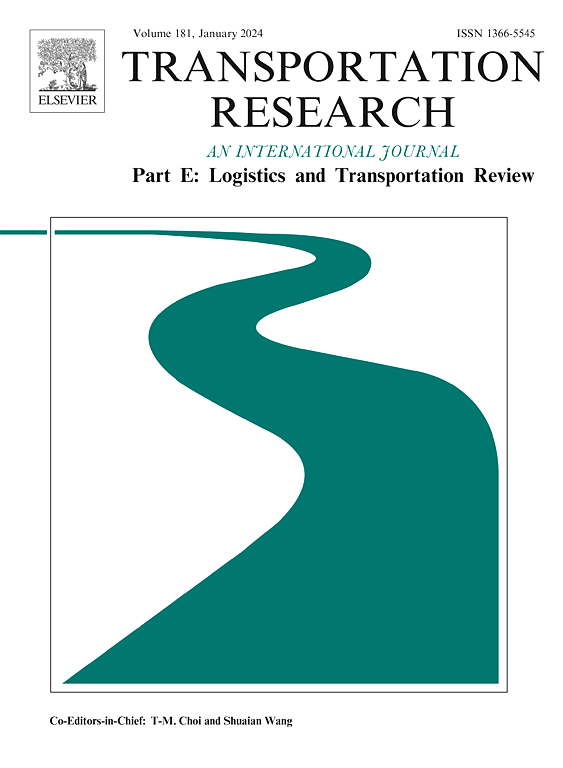Modeling the departure time choices of attendees for special events with cruising-for-parking
IF 8.3
1区 工程技术
Q1 ECONOMICS
Transportation Research Part E-Logistics and Transportation Review
Pub Date : 2025-04-08
DOI:10.1016/j.tre.2025.104103
引用次数: 0
Abstract
Special events lead to a surge in parking demand and severe traffic congestion in areas around event venues. This study investigates the departure-time choices and parking searches of attendees for special events and the resulting traffic congestion. Given the limited parking spaces around venues, drivers expanded their search area over time. Therefore, a bathtub model with a variable cruising area is proposed to analyse traffic dynamics around event venues. It was found that increasing the density of parking spaces does not always reduce the total cruising time, and may even exacerbate traffic congestion near the event venue, suggesting the self-regulating nature of cruising for parking. Moreover, it is shown that although increasing the bottleneck capacity helps reduce the queuing time and duration of peak periods, it may worsen traffic conditions within the cruising area. An optimal bottleneck capacity was provided to minimise the total travel time for all attendees.
求助全文
约1分钟内获得全文
求助全文
来源期刊
CiteScore
16.20
自引率
16.00%
发文量
285
审稿时长
62 days
期刊介绍:
Transportation Research Part E: Logistics and Transportation Review is a reputable journal that publishes high-quality articles covering a wide range of topics in the field of logistics and transportation research. The journal welcomes submissions on various subjects, including transport economics, transport infrastructure and investment appraisal, evaluation of public policies related to transportation, empirical and analytical studies of logistics management practices and performance, logistics and operations models, and logistics and supply chain management.
Part E aims to provide informative and well-researched articles that contribute to the understanding and advancement of the field. The content of the journal is complementary to other prestigious journals in transportation research, such as Transportation Research Part A: Policy and Practice, Part B: Methodological, Part C: Emerging Technologies, Part D: Transport and Environment, and Part F: Traffic Psychology and Behaviour. Together, these journals form a comprehensive and cohesive reference for current research in transportation science.

 求助内容:
求助内容: 应助结果提醒方式:
应助结果提醒方式:


